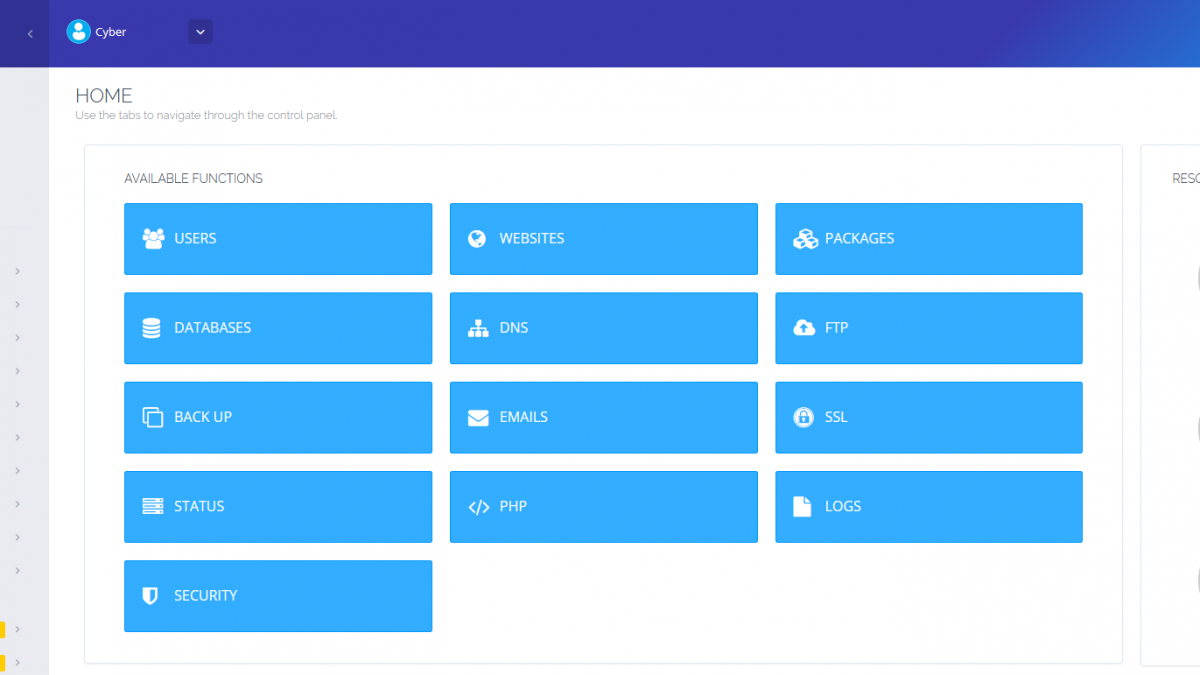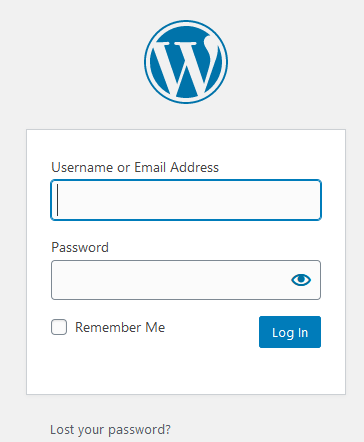Should You Buy Your Website Domain from Your Web Host?
November 30, 2019
How Do Servers Work
July 9, 2020In-Depth CyberPanel Guide – The Open Source Webhosting Control Panel for OpenLiteSpeed
CyberPanel touts itself as being a “next gen” webhosting control panel focused on speed, security and reliability. It garnered a lot of interest for two reasons. The de facto webhosting control panel, CPanel, increased their prices substantially, which caused hosting providers to bill more for their services. Also, the popularity of OpenLiteSpeed is growing. OpenLiteSpeed (or OLS) and CyberPanel are like peanut butter and jelly, song and dance, fish and chips, you get the point. CyberPanel is an open-source control panel built specifically for OLS while OLS is an open source Apache web server alternative that supports many more concurrent connections. For reference, Apache started in 1999 while OpenLiteSpeed started shortly after in 2003. We consider both mature server software with varying approaches.
First Time Logging In
So you have CyberPanel installed and linked up to OLS by your favorite webhost, you’re ready to rumble. Your host should provide you with a URL and credentials to login. Sometimes the URL will be an IP address. When you first login a dashboard page similar to the below will greet you:

There’s a lot going on here but you can see down the column on the left you have the main menu of CyberPanel. In the middle is your dashboard where the most commonly used functions live. And on the right you have a live snapshot of your server’s CPU, RAM, and disk usage. Neat!
The Users button is where you can create additional users that can login to CyberPanel.
The websites section is important, let’s see what this looks like:

Here you can add websites to your control panel, list all websites you have set up, and more. You will first want to create a website because there won’t be any to list or modify. CyberPanel provides you with the following options when creating your website:
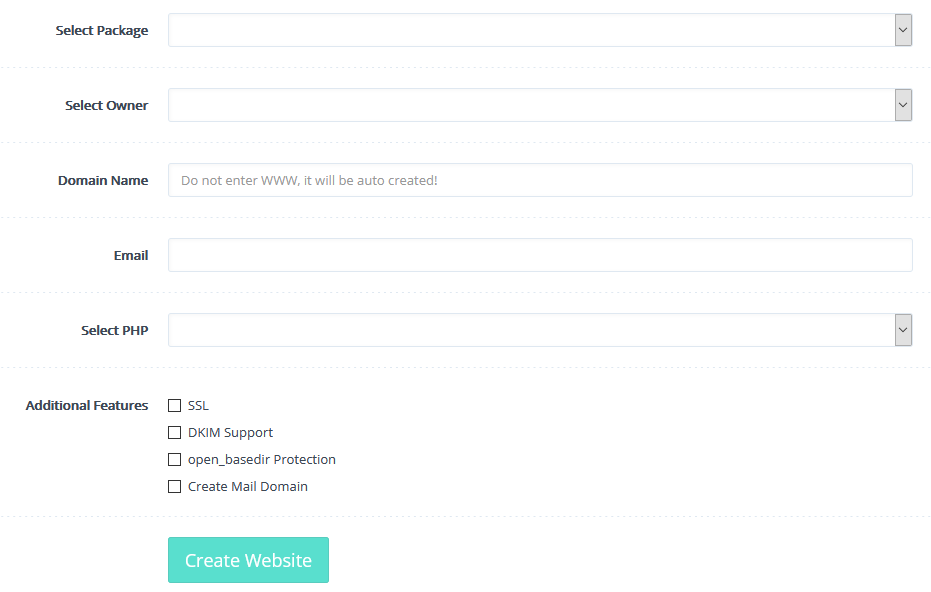
Typically, you have the domain name and email address of the website owner, but you’re also able to select the version of PHP you want to use and check a box to add SSL, DKIM (for email) and more. This is BIG! Check a box to get FREE automatically renewing SSL for any website added to your hosting plan. Very cool! CyberPanel uses the glorious non-profit Let’s Encrypt to issue certificates via the SSL function on this page. The Create Mail Domain option is great. It will create a mail.yourdomain.com sub-domain for accessing webmail.
Adding DNS Records in CyberPanel
When you create a website as above, the typical DNS records get created for you automatically. In CyberPanel you have full control over all DNS records for your websites. CyberPanel uses another fabulous open source package, PowerDNS, for their nameserver software.

Database Management in CyberPanel
You have complete control over your databases and can create new databases and database users all from CyberPanel. PHPMyAdmin is a standard in the webhosting industry, so CyberPanel comes with it by default. PHPMyAdmin has an intuitive web interface with loads of features including export/import to Excel or CSV, advanced tools for MySQL and Maria DB including common SQL functions and triggers and stored procedures, and much more. It’s free and has been around since 1998.
Security Control by Default
This may not be a surprise, but in CyberPanel you have complete control of your website security. You can add/edit/remove firewall rules at your leisure or change cross-site forgery settings and modsecurity rules. Be careful here. You shouldn’t touch anything unless you know what you’re doing. If you’re having issues, it’s probably best to contact your hosting provider before changing anything in this area. If you’re a power user or learning as you go, it’s nice to know this level of control exists.
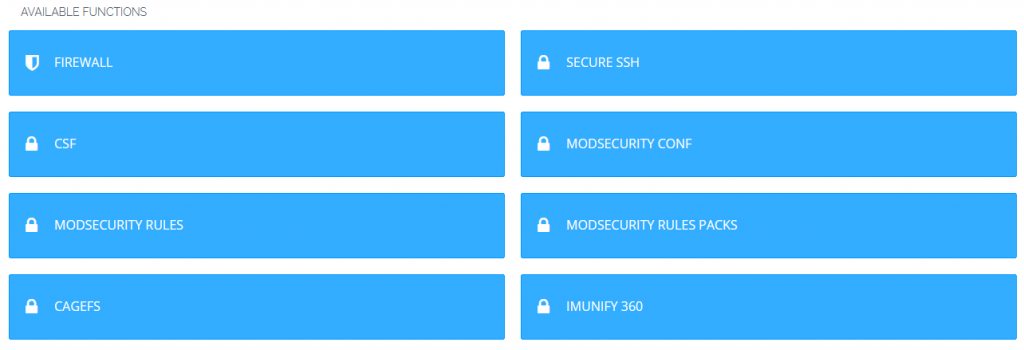
Creating Unlimited Email Accounts in CyberPanel
CP uses Rainloop as the default webmail client. As long as your host supports it, you can create unlimited email accounts linked up to the domain you created in the website area. You can control and reset passwords, adjust DKIM settings, set up email forwarding, and access your webmail through the Rainloop login page.
Rainloop has some very cool features, including a modern interface that feels almost like the Outlook web client. It comes with IMAP and SMTP support, drag and drop emails, email address autocomplete, social media integrations, and more. Just like most software used by CyberPanel, Rainloop is free and open-source software.
Automatic Backups Build-In with CyberPanel
Losing your website data is a thing of the past. Establishing scheduled backups should be one of the first things you should do after setting up your website using the CyberPanel control panel. It’s free, exceptional, and built in! From the backup screen you can take a onetime immediate snapshot. This can be handy when performing major CMS upgrades or other sensitive procedures. You can set up automatic transferring of backups to a remote server. This is an outstanding idea, but a little more advanced. You can also establish automatic backups to run daily/weekly. You can restore from any of the backups you’ve created.

How to Set Up WordPress or Other CMS on a Domain from CyberPanel
This is by far the most powerful and feature-packed area of CyberPanel. You’ve added your website to Cyberpanel, confirmed DNS settings and propagation, established automatic backups, it’s time to dig into website management. When you go to Websites -> List, you will see all of your domains listed in a table. Towards the top-right of each panel there is a “Manage” link. There’s a lot of power hiding behind this little link.

When you click the Manage button, a whole new world opens up, all in relation to your website. You can view server error logs for your site or you can set up SSH access for developers working on your website. You can establish a proper staging environment for your developers test additional features before releasing it to your live site. You can manage or link a version control system using GIT (another free and open source godsend of a program).
From the website management area you can add new domains to point to your website, or create domain aliases. You can add or change existing cron jobs. You can control FTP users and determine what they can access. There’s an email marketing section which you can link up to a 3rd party mailing tool to manage email lists and send email campaigns through your website.
Third Party Application Installer
CyberPanel comes with a free third party application installer. Right now it supports WordPress (and the blazing fast LSCache plugin), Joomla, git, Prestashop, and Magento. The developers are constantly working to improve the CyberPanel control panel and rolling out additional features and third party integrations. Keep your eye on the applications installer, I think this will be one of the fastest growing areas of CP.

It’s easy and quick to get a secure, scalable WordPress application set up with CyberPanel. Once you click WP + LSCache you select a name of your website or blog, create a username and password and enter your email address and POOF! You have WordPress.
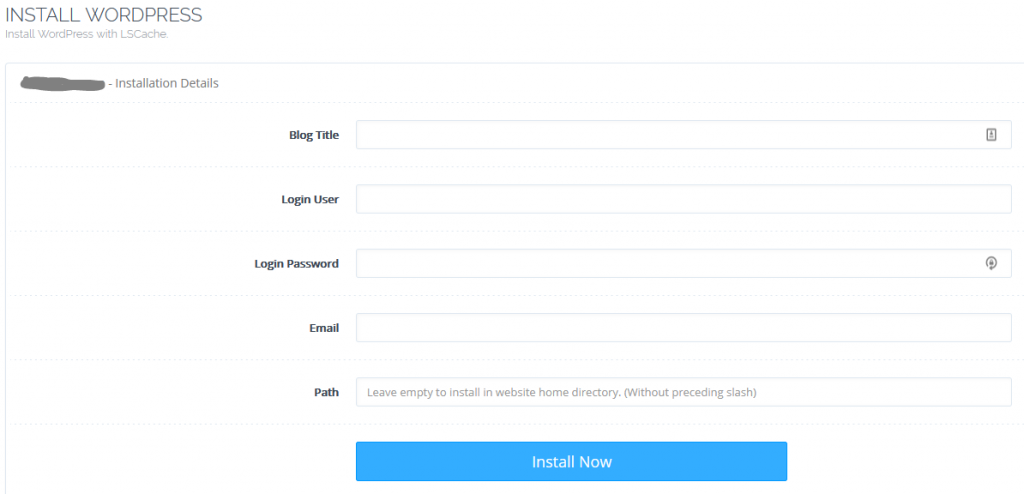
Finishing Thoughts
At EvergreenTech.io we love CyberPanel and consider it the control panel of the future. It has all the right pieces in place to be the next big thing in the webhosting industry. With its user-friendly dashboard and super quick application installer, it’s difficult to find anything missing. You have full control over every aspect of your websites, emails, domains/DNS, firewall/security, and backup schedules. CyberPanel excels at making complex things simple. We look forward to growing with this trail blazing control panel.
CyberPanel Full Feature List
There’s just too much to talk about, but we didn’t want to leave anything out. Here’s a comprehensive and growing list of CyberPanel features:
- Redis Mass Hosting
- Imunify360 Integration
- Git Manager
- CloudFlare DNS Synchronization
- Web Based Terminal
- Docker Manager
- User Management
- SSL/HTTPS
- FTP Manager
- DNS Server (PowerDNS).
- PHPMyAdmin
- Email Management and Webmail (Rainloop).
- File Manager
- PHP Management
- Firewall Management
- Simple and Auto Backup and Restore

